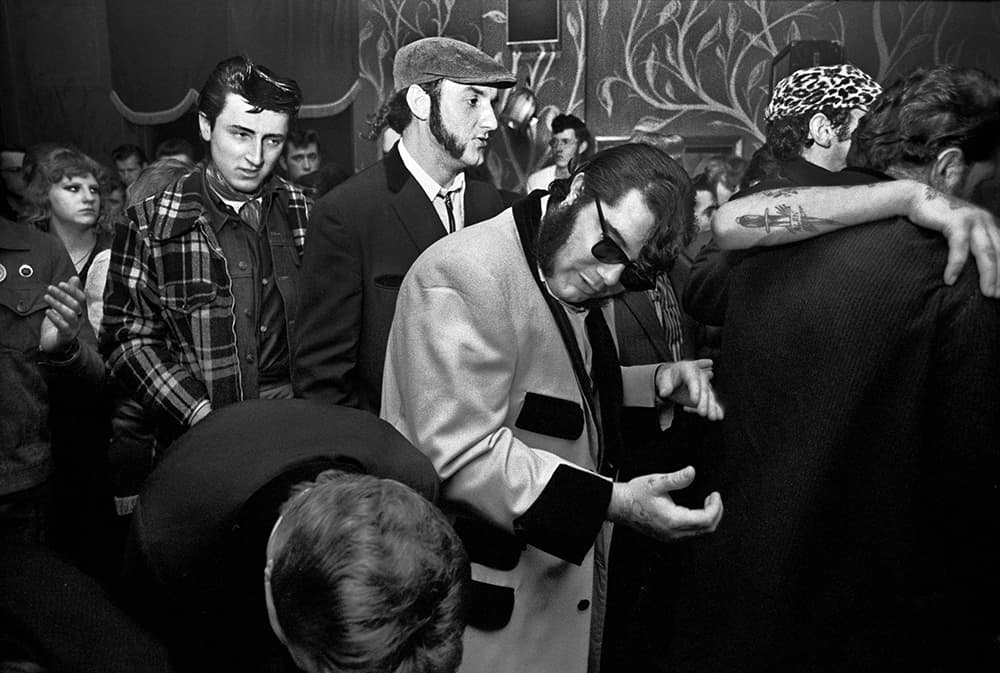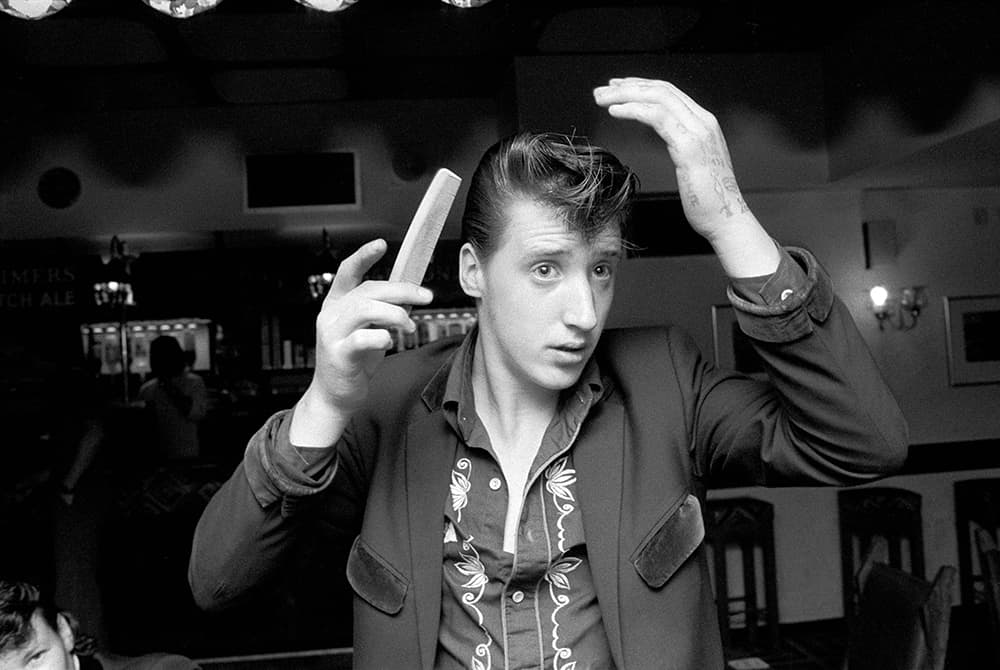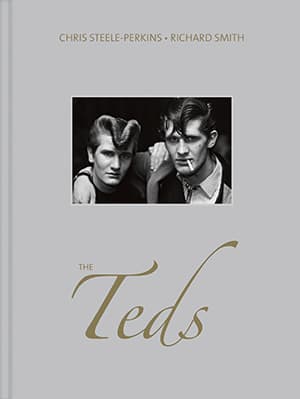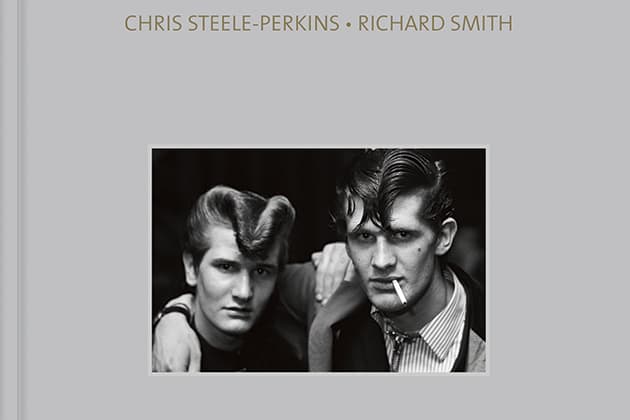
At the Adam and Even pub in Hackney, London, 1976. All images Chris Steele-Perkins/Magnum Photos/www.dewilewis.com
Perhaps the overarching theme of the 20th century was the fact that culture had begun to eat itself. Like the ancient symbol of the ouroboros snake devouring its own tail, society began the now widespread practice of pillaging the past to create bespoke contemporary style. In the early1950s, one such group of young men began looking to the fashion of the Edwardian period’s dandies for a uniform to match their fledgling rebellious attitude.
The concrete history of the Teddy Boys is something that hasn’t been entirely agreed upon (these things rarely are), but we do know that the subculture began in London in the1950s. Some say it began in the mid-1950s as a reaction, or side-effect, of the insurgence of American rock ’n’ roll, most notably with the rise of Bill Haley, Little Richard and Elvis, all of whom were exhaustedly thrusting their hips into the ears of the West’s youth.
Others maintain that the Teddy Boys began a few years earlier, and were a distinctly British phenomenon. Regardless, in1956 after a screening of the film Blackboard Jungle in Elephant and Castle, London, the teenage Teddy Boy audience began to riot and tear up seats. Attempts by police to disperse them were met with strong resistance. Fireworks were thrown, windows were smashed, and someone probably got Brylcreem on their brothel creepers.
This wasn’t an isolated incident. Teddy Boys rioted wherever Blackboard Jungle was shown in the UK. Violent clashes with rival gangs became the staple of the Teddy Boy movement. Meanwhile, the British press sharpened their pencils, rubbed their hands with glee and got to work demonising the Teddy Boys as being a firm representation of the dangers of teenage rebellion. Bear in mind that adolescents had only recently been identified. The word ‘teenager’ was among a flush of now familiar terms actually only coined a decade before in the early 1940s (see also ‘racism’ and ‘genocide’).

A Teddy Boy combing his hair during a night out at the Market Tavern in Bradford, West Yorkshire, 1976
Fashion backwards
Today, thanks to the documents of people like Chris Steele-Perkins, we remember the Teddy Boys more for their considered and carefully maintained style of dress – tapered trousers, long jackets, brothel- creeper shoes and slick quiffs – than we do for their penchant for a punch-up.
Notably, the Teddy Boys were not a fly-by-night group. They lasted for a good long while. In fact, walk through Camden today and you’ll still see a few old fellows keeping the flame alive and muttering about the youth of today. But back in the late 1970s, the scene was still thriving and Chris Steele-Perkins was there to get inside the phenomenon.
It was soon after this that Steele- Perkins joined Magnum. It’s not difficult to see why the hallowed agency would want him on their books. The images in The Teds positively fizzle with energy. The scenes in the dance halls are especially great. You can almost smell the sweat and feel the bass of the music pumping through the panelled flooring. Steele- Perkins leaves no stone unturned. We see just about every aspect of the lifestyle, from them carefully preparing their hair in the mirror, their social engagements, relaxing in the sun to just generally hanging out looking a little shifty. Each and every monochrome frame is a beauty and is so full of story you want to climb inside and look around.

Taking a break from it all on a bank holiday, Southend, Essex, 1976
Classic is a word often bandied around, often to the point that the power of the word dissipates. But The Teds really is a bona fide classic of British post-war documentary photography. Anyone with an inkling that they may want to start investigating the genre of documentary themselves would do well to study this book. It’s not just about the images – it’s in the way they’re presented, the order in which they run and the way they come together to form a unifying narrative.
At the end we find words by insider Richard Smith, who adds real poetic heft to the images. In fact, it works so well that once you get there and read those words you want to flick right back to page one and start again with those syllables still singing in your ears. After The Teds, Steele-Perkins moved on to explore multiple other stories of England. Within just a few years, it became clear that he was, and still is, one of the most important social historians we have.
SCORE: 5 out of 5

Published by: Dewi Lewis
Price: £25, 128 pages, hardback
ISBN: 978-1- 91130-605-7








